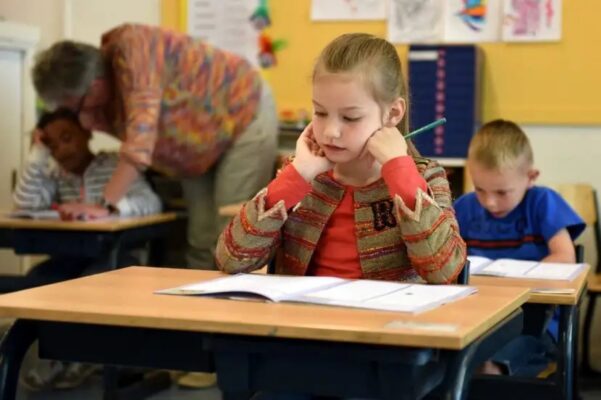58% of school funding in California comes from property taxes. Therefore, one would assume that San Francisco would have well-funded and high-performing schools since the amount of property taxes collected yearly is huge. However, the opposite is the case. Most residents will tell you that San Francisco schools do not have the best reputation. Additionally, independent websites that collect data and reviews consistently show that San Francisco schools underperform. Some very good public schools rival some of the best private schools. They are just not the norm, and you have to spend the time to seek them out and do your research.
By and large private schools in San Francisco fall into three categories: 1) the few charter schools scattered across the City; 2) Catholic schools that have a rich history in the City from a time when the church and City hall worked together, and 3) newer independent schools that have been around for less than a few decades, plus some that are just now graduating their first groups of students. So, how do you choose the right school for your child and you? Here are some tips for selecting the right K-8 school:
Location: start with your home address. Either where you already live or where you think you might live. If you have decided to send your child to a public school, the San Francisco Unified School District will now limit your choice to the nearest schools to your neighborhood. This is a departure from the previous guidelines, allowing you to enroll your child in any school across the City.
Budget: if you can afford a private school outright, and even if your first choice is not nearly, you can invest the time to take your child across town. It is a common practice, and some parents even take their children across the bridge into Marin or the East Bay. All private schools also offer financial aid to a percentage of their students to be more inclusive and have a diverse student body. It does not hurt to apply for aid and see what the school offers. In some cases, the aid covers almost the entire tuition.
School Philosophy/Approach: by and large most schools will talk about equity, diversity, helping your child thrive, and bringing out the best in them. However, the approach might be different. For example, the Montessori school groups students by age range and not by grade. In other words, there will be student income groups, which range in age from 9 to 11 or 12. And there is a private and public school that uses the Montessori method.
References: if you know people whose children attend a specific school, it would be logical to talk to them and get their opinions. However, some schools, such as San Francisco Day, match you with an existing school family who can answer questions you may not want to ask the school administrators and teachers. Additionally, both public and private schools (a lot of them) offer “student shadowing.” This practice allows your child to spend time at the prospective school or school to see how they feel in that environment.
Curriculum: some schools emphasize the arts; others lean more toward science and math. Therefore, if your child has particular interests, you can find a school that will feed those interests.
School grounds: as you might expect, most schools within City limits do not have typical schoolyards with landscaped areas and maybe some soil. Most schools have paved yards, and, where available, the children travel to the nearest park, open space, and state park, such as the Presidio. Therefore, you might consider what outdoor play options your child will have.
The process for finding the right high school is similar, though there are a couple more options. For example, Lowell High School is an excellent institution known as the “Harvard of high schools.’ In previous years, admissions requirements to Lowell were very challenging. However, this year, due to Covid-19, the entrance requirements have been relaxed and are the same for most other schools, basically a lottery system.
Additionally, the Ruth Asawa School of the Arts (SOTA) excels in teaching the arts in addition to high school basics, such as math, English, the sciences, etc. To that end, SOTA requires your child to audition to be accepted. The various art departments include Architecture and Design, Film and Media, Dance, and Theatre Arts.
There are also plenty of private high schools, but the price tag can be as high as $50,000 per school year. However, just like the middle schools, financial aid is available. Also, Catholic high schools start in the low $20,000s, a bit more affordable.
In general, looking for and finding the right school for your child will take time and effort in San Francisco, but this trend is statewide. Ultimately, the decision usually comes down to location, academics, and cost, but, most of all, a feeling that the school fits your child’s nature and interests.
The following websites should come in handy for your search:
- San Francisco Unified School District: sfusd.edu
- A website that collects data and reviews for private schools: niche.com

Greening Projects
Author Bio
Jorge Romero-Lozano, PE, LEED AP, PMP, is Greening Projects‘ Executive Director and Founder. As a licensed civil engineer with a passion for planning, designing, and building green spaces, he provides both the technical expertise, as well as the passion for envisioning potential green paces as well as supporting neighborhoods, individuals, and other professionals who wish to improve their environments and engage their communities.

